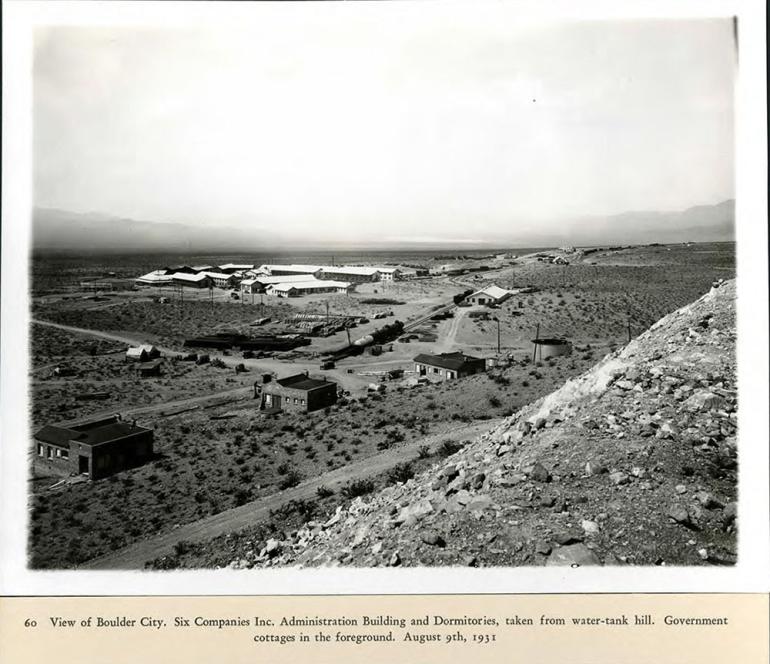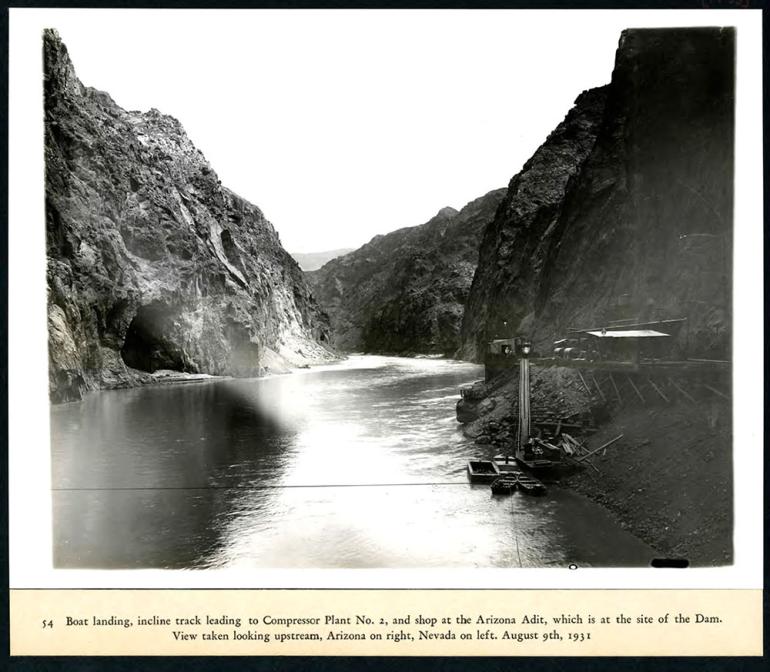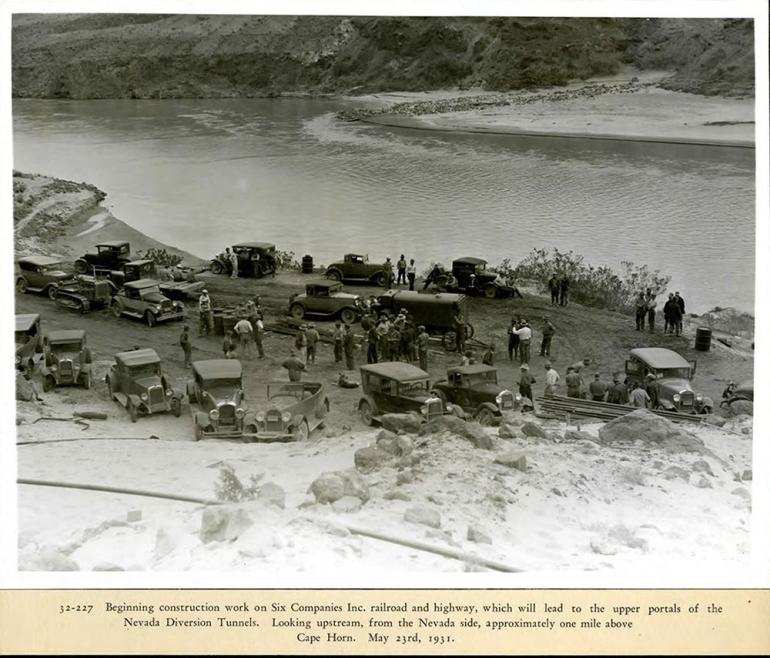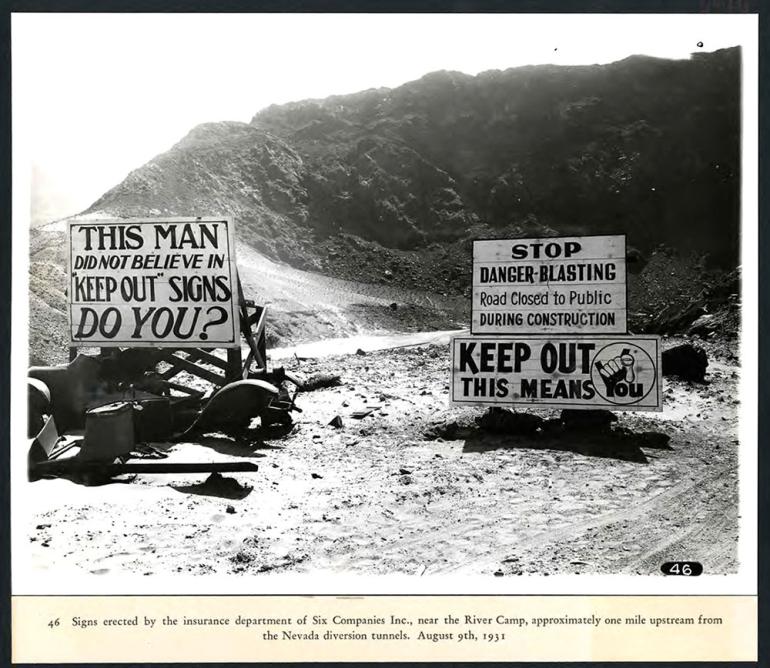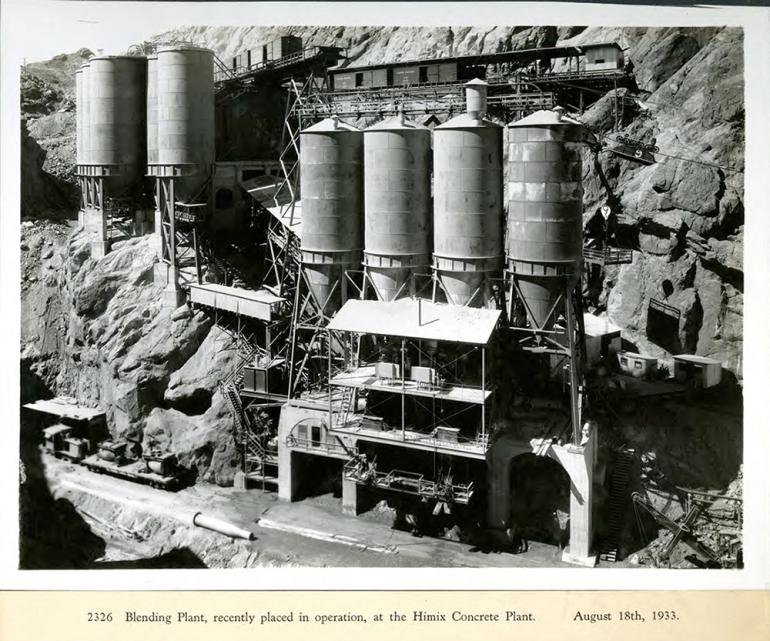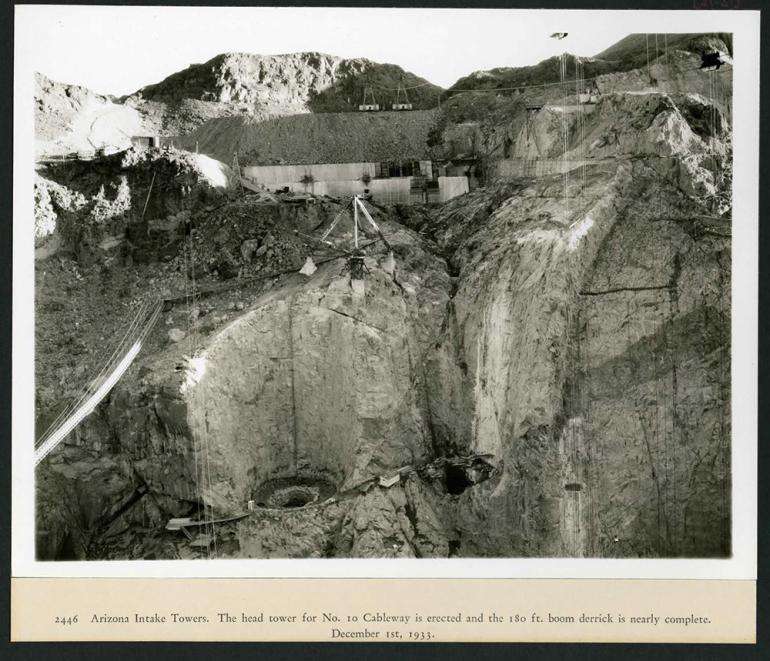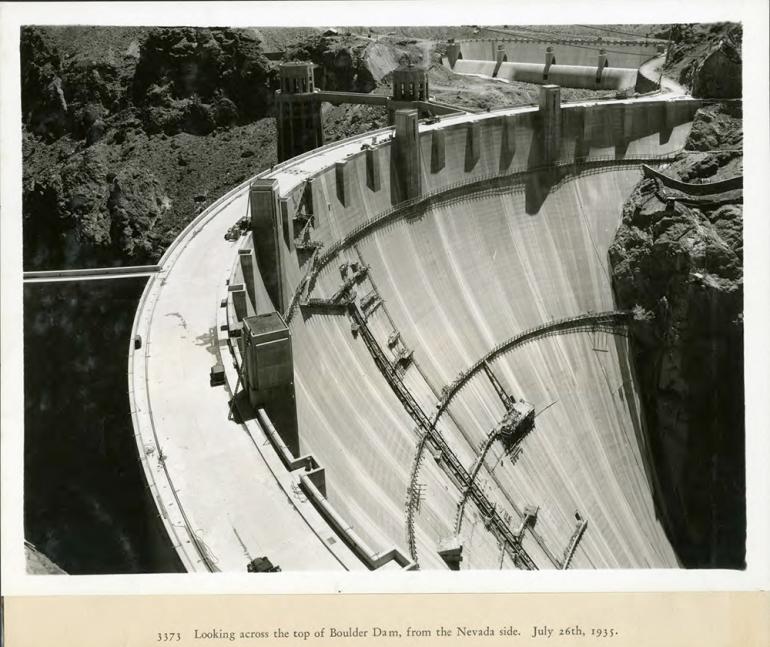On This Page
- Rendering Links ...
The Hoover Dam
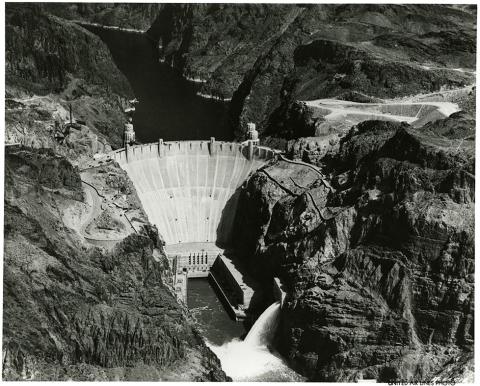
85 years after its completion, Hoover dam is still considered an engineering marvel. It is named in honor of President Herbert Hoover, who played a crucial role in its creation.
For many years, residents of the American southwest sought to tame the unpredictable Colorado River. Disastrous floods during the early 1900’s led residents of the area to look to the federal government for aid, and experiments with irrigation on a limited scale had shown that this arid region could be transformed into fertile cropland, if only the river could be controlled. The greatest obstacle to the construction of such a dam was the allocation of water rights among the seven states comprising the Colorado River drainage basin. Meetings were held in 1918, 1919 and 1920, but the states could not reach a consensus.
Herbert Hoover had visited the Lower Colorado region in the years before World War I and was familiar with its problems and the potential for development. Upon becoming Secretary of Commerce in 1921, Hoover proposed the construction of a dam on the Colorado River. In addition to flood control and irrigation, it would provide a dependable supply of water for Los Angeles and Southern California. The project would be self-supporting, recovering its cost through the sale of hydroelectric power generated by the dam.
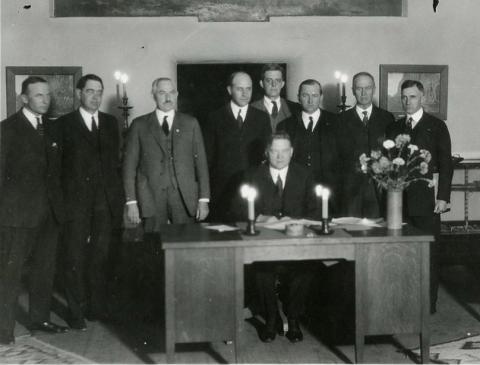
In 1921, the state legislatures of the Colorado River basin authorized commissioners to negotiate an interstate agreement. Congress authorized President Harding to appoint a representative for the federal government to serve as chair of the Colorado River Commission and on December 17, 1921, Harding appointed Hoover to that role.
When the commission assembled in Santa Fe in November 1922, the seven states still disagreed over the fair distribution of water. The upstream states feared that the downstream states, with their rapidly developing agricultural and power demands, would quickly preempt rights to the water by the “first in time, first in right” doctrine. Hoover suggested a compromise that the water be divided between the upper and lower basins without individual state quotas. The resulting Colorado River Compact was signed on November 24, 1922. It split the river basin into upper and lower halves with the states within each region deciding amongst themselves how the water would be allocated.
A series of bills calling for Federal funding to build the dam were introduced by Congressman Phil D. Swing and Senator Hiram W. Johnson between 1922 and 1928, all of which were rejected. The last Swing-Johnson bill, titled the Boulder Canyon Project Act, was largely written by Hoover and Secretary of the Interior Hubert Work. Congress finally agreed, and the bill was signed into law on December 21, 1928 by President Coolidge. The dream was about to become reality.
On June 25, 1929, less than four months after his inauguration, President Herbert Hoover signed a proclamation declaring the Colorado River Compact effective at last. Appropriations were approved and construction began in 1930. The dam was dedicated in 1935 and the hydroelectric generators went online in 1937. In 1947, Congress officially "restored" Hoover's name to the dam, after FDR's Secretary of the Interior tried to remove it. Hoover Dam was built for a cost of $49 million (approximately $1 billion adjusted for inflation). The power plant and generators cost an additional $71 million, more than the cost of the dam itself. The sale of electrical power generated by the dam paid back its construction cost, with interest, by 1987.
Today the Hoover Dam controls the flooding of the Colorado River, irrigates more than 1.5 million acres of land, and provides water to more than 16 million people. Lake Mead supports recreational activities and provides habitats to fish and wildlife. Power generated by the dam provides energy to power over 500,000 homes. The Hoover Compromise still governs how the water is shared.


